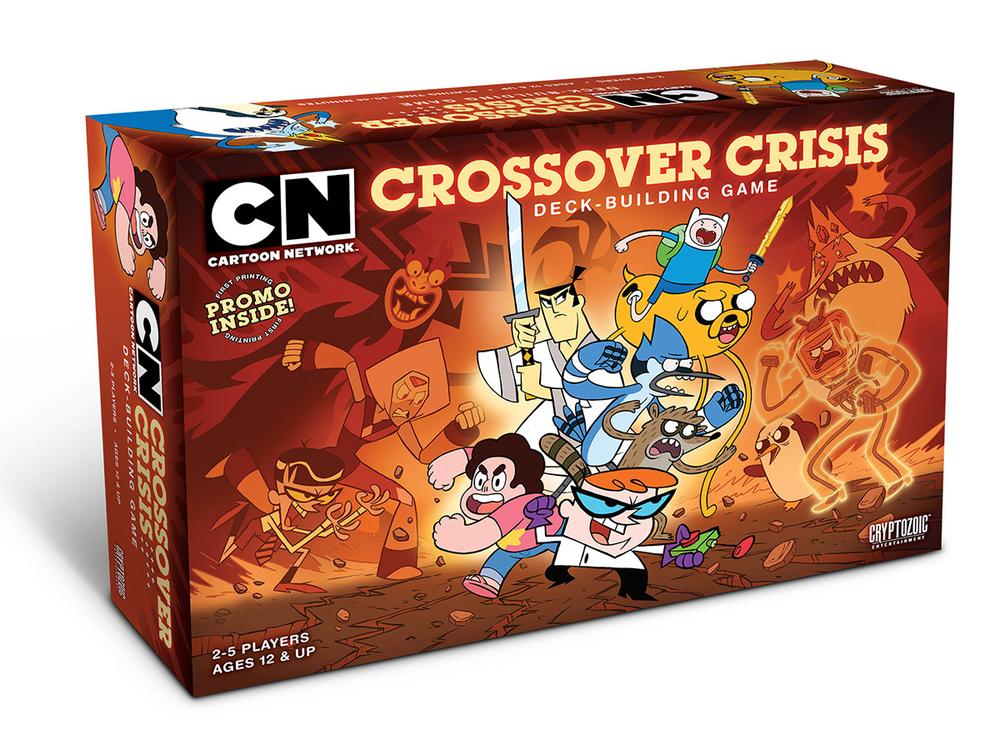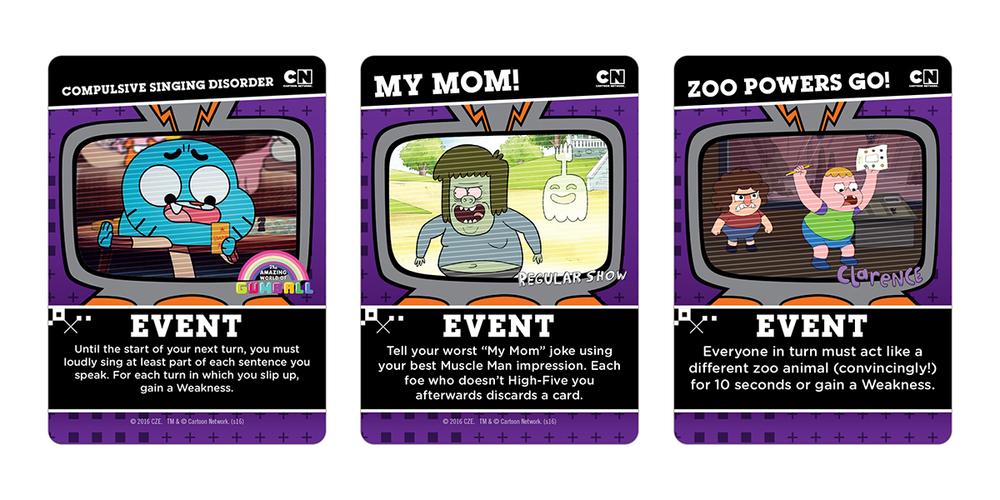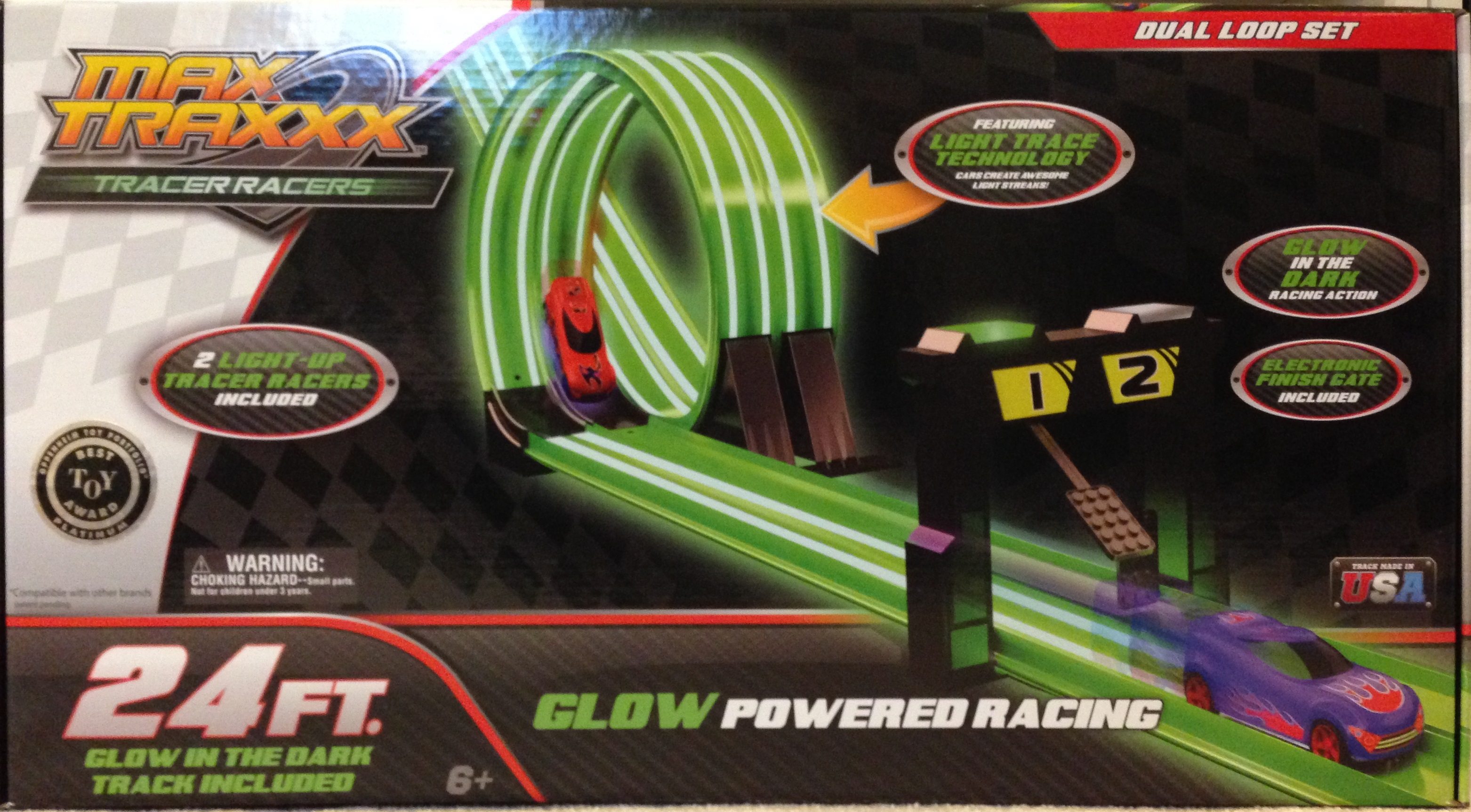
Last Saturday was International Tabletop Day, but, weary from a week of field trips and dental appointments, the kids and I decided to shrug off this year’s public gameplay events in favor of staying home. (The fact that this kept us indoors and away from the often contrary weather of a Carolina spring also may’ve played a part in that decision.)
Still, this didn’t keep us from fulfilling our nerdly duties of indulging in a little gaming ourselves. In fact, we used it as an excuse to further enjoy what has become a new household favorite, the Cartoon Network Crossover Crisis Deck-Building Game from Cryptozoic Entertainment.
While traditional board games, RPGs, and even a handful of CCGs (most specifically the Pokémon Trading Card Game and Cryptozoic’s own Card Wars) regularly feature in our family tabletop gaming, deck-builders are a rarity. In fact, this one likely stands as my children’s first real experience with the genre.
The good news is Cartoon Network Crossover Crisis is an easy on-ramp for deck-building newbs, and, despite its 12+ suggested age range, even my 8-year-old was able to get the hang of it rather quickly. The better news is, being that we’re all big Cartoon Network fans, the game’s theme was seemingly tailor-made to keep us engaged and entertained.
CNCC is built on the Cerberus Engine, which essentially means it plays similarly to Cryptozoic Entertainment’s other licensed deck-building titles like NHL Power Play and their expansive DC Comics line. For those not familiar with those products, just know that when you crack open that box you’ll be greeted with cards. Lots and lots of cards.
In addition to its 15-page rulebook and oversized Character cards–ranging from contemporary Cartoon Network standouts like Steven Universe and Clarence to classics like Courage and Dexter and each featuring a unique special ability–it boasts an impressive 206 game cards. These breakdown as follows: 36 Punchies; 16 Pratfalls; 16 Inside Jokes; 10 Nemeses; 25 Weaknesses; 20 Events; and 83 Main Deck cards.
Punchies and Pratfalls make up the game’s starting cards, with each player receiving (along with his Character card) 7 Punchies and 3 Pratfalls to form his starter draw deck. Each Punchies card has a base Power of +1, which is used as the game progresses to buy more powerful cards. On the other hand, Pratfalls, while lacking Power, instead help the player remove pesky Weakness cards.

As the game begins, 10 of the 20 Event cards–which represent silly short-term, real-world challenges like forcing players to sing, dance, or provide their own sound effects lest they be forced to gain a Weakness–are shuffled into the Main Deck, which already consists of a number of special card types. Hero cards provide additional Power and helpful abilities while Villain cards provide Power as well as a means to Attack your opponents (your “Foes”) directly. Location cards provide ongoing, game-altering effects while Equipment and Super Power cards offer things like Power buffs.
Five cards are drawn from this Main Deck and lined up horizontally across the play area to form the Line-Up. They are bordered on one side by the remainder of the Main Deck and on the other by a smaller vertical line consisting of three individual stacks: the Inside Jokes (which simply provide Power at an affordable price), Weaknesses (which compromise your play deck with their negative effects), and a stack of Nemesis cards. These represent the enemies that you and your Foes seek to defeat, and, while the number of Nemeses varies depending on the player count, Adventure Time‘s Ice King is always the first baddy up to bat.
Each player shuffles his 10-card deck and draws a 5-card hand to start, and play begins.
On a turn, the player fills in any empty spaces in the Line-Up by drawing from the Main Deck. Any visible Event cards must be resolved first, generally forcing the player(s) to abide by some strange physical limitation or other such challenge, and then removed from the Line-Up.
Weakness cards from the player’s hand are then revealed, and, again, further dictate what additional limitations are at play for the remainder of his turn. The remainder of the cards from his hand may then be played, with Pratfalls used to nullify active Weaknesses and cards like Punchies, Equipment, and Heroes played in tandem to increase the Power value.
Power can then be used to purchase cards from the Line-Up or defeat the current Nemesis, assuming, of course, that the player has an available Power value greater than or equal to the target card’s cost (located in a circle in each card’s lower-right corner). Early on, Inside Joke cards can also be purchased–a smart move, as their +2 Power make each one twice effective as the base +1 Punchies cards.
With the turn over, the player resolves any lingering card effects, making sure all purchased cards (not to mention any unused cards from the player’s hand) are placed in his discard pile. If at the beginning of a turn a player is unable to draw a full 5-card hand, the cards from this discard pile are shuffled and used to replenish his personal draw deck, thus supplementing and strengthening a player’s potential hand.
Play passes to the next player, where the Line-Up is again filled out and a new Nemesis is revealed–assuming the previous one was defeated. The game continues, with players fighting each other, defeating Nemeses, and acquiring new, more powerful cards until all the Nemesis cards have been exhausted or the Main Deck lacks the requisite number of cards needed to replenish the Line-Up. At this point, players tally the Victory Point total of their individual decks (using the number visible in the yellow star located in the lower-left corner of each card), and the player with the highest VP total wins.
Based on my (admittedly limited) test audience, I proclaim the Cartoon Network Crossover Crisis Deck-Building Game to be a big hit with kids… and intoxicated adults. The blend of all those whimsical Cartoon Network properties and the game’s tendency to inject a little physicality into its gameplay–which includes, in addition to Event cards, frequent calls for the players to Fist Bump and play Rock-Paper-Scissors–takes what would normally be a perfectly serviceable tabletop experience to the next level.
That said, if your play group tends to consist of more reserved, more “serious” gamers, CNCC might be met with more raised eyebrows than enthusiastic first-bumps. And you know what? That’s okay too.
However, if you’re looking to liven up a game night, or even just in the market for a fun, light tabletop title to break up rounds of more intense fare, the Cartoon Network Crossover Crisis Deck-Building Game is exactly what you’re looking for.
Review materials provided by: Cryptozoic Entertainment




magnificent issues altogether, you simply won a new reader.
What could you recommend about your post that you simply made a few days ago?
Any positive?